Tunguska event
description: an explosion that occurred in 1908 over Siberia, likely caused by the airburst of a small comet or asteroid
16 results
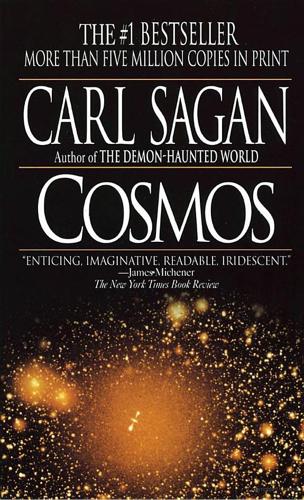
Cosmos
by
Carl Sagan
Published 1 Jan 1980
The key point of the Tunguska Event is that there was a tremendous explosion, a great shock wave, an enormous forest fire, and yet there is no impact crater at the site. There seems to be only one explanation consistent with all the facts: In 1908 a piece of a comet hit the Earth. In the vast spaces between the planets there are many objects, some rocky, some metallic, some icy, some composed partly of organic molecules. They range from grains of dust to irregular blocks the size of Nicaragua or Bhutan. And sometimes, by accident, there is a planet in the way. The Tunguska Event was probably caused by an icy cometary fragment about a hundred meters across—the size of a football field—weighing a million tons, moving at about 30 kilometers per second, 70,000 miles per hour.
…
… I was washing wool on the bank of the River Kan. Suddenly a noise like the fluttering of the wings of a frightened bird was heard … and a kind of swell came up the river. After this came a single sharp bang so loud that one of the workmen … fell into the water. This remarkable occurrence is called the Tunguska Event. Some scientists have suggested that it was caused by a piece of hurtling antimatter, annihilated on contact with the ordinary matter of the Earth, disappearing in a flash of gamma rays. But the absence of radioactivity at the impact site gives no support to this explanation. Others postulate that a mini black hole passed through the Earth in Siberia and out the other side.
…
Where that orbit intersects the orbit of the Earth, there is a swarm of meteors waiting for us. Some part of the swarm is always at the same position in the Earth’s orbit, so the meteor shower is always observed on the same day of every year. June 30, 1908 was the day of the Beta Taurid meteor shower, connected with the orbit of Comet Encke. The Tunguska Event seems to have been caused by a chunk of Comet Encke, a piece substantially larger than the tiny fragments that cause those glittering, harmless meteor showers. Comets have always evoked fear and awe and superstition. Their occasional apparitions disturbingly challenged the notion of an unalterable and divinely ordered Cosmos.
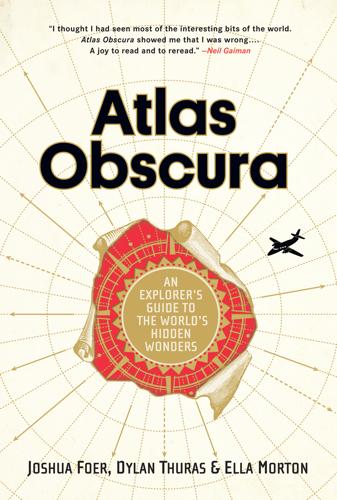
Atlas Obscura: An Explorer's Guide to the World's Hidden Wonders
by
Joshua Foer
,
Dylan Thuras
and
Ella Morton
Published 19 Sep 2016
Get a bus or trolleybus to Universitetskaya Naberezhnaya. 59.941568 30.304588 Completed in 1654, the Gottorb Globe was the world’s first planetarium. Tunguska Event Epicenter VANAVARA, KRASNOYARSK KRAI On June 30, 1908, at 7:14 a.m., a powerful explosion shattered windows, knocked people off their feet, and leveled 80 million trees over 830 square miles (2,150 sq. km) of forest around Siberia’s Podkamennaya Tunguska River basin. Initial speculation was that a meteorite had hit Earth, but subsequent investigations found no crater in the area. Naturally, the mysterious nature of the Tunguska Event has given rise to a wealth of conspiracy theories. Among the more far-fetched culprits: a tiny black hole passing through the Earth; a UFO crash; and the testing of Nikola Tesla’s secret “death ray.”
…
Among the more far-fetched culprits: a tiny black hole passing through the Earth; a UFO crash; and the testing of Nikola Tesla’s secret “death ray.” Today, the favored scientific explanation involves the midair explosion of a large meteoroid or comet. Indeed, it is the largest impact event in recent history. Split, mangled, and felled trees are all still visible around the Tunguska site. The closest village to the Tunguska Event epicenter is the town of Vanavara, located about 40 miles (65 km) southeast of the epicenter. 60.902539 101.904508 Kola Superdeep Borehole MURMANSK, MURMANSK OBLAST Until 1970, geologists could only theorize about the composition of the Earth’s crust. That was the year Soviet scientists began drilling what would become the deepest hole in the world.
…
Andrews bunker, 20 Wunderland Kalkar, 46, 429 OUTER SPACE Arecibo Observatory, 439 Astronomical Clock of Besançon Cathedral, 33 Baikonur Cosmodrome, 136 Calendar Sundial, 17 Campo del Cielo Meteorite, 386 Eisinga Planetarium, 62–63 Evergreen Aviation & Space Museum, 290 Haughton Impact Crater, 262–263 Hoba Meteorite, 214 Jantar Mantar Astronomical Instruments, 130 Kovac Planetarium, 334 Large Zenith Telescope, 260 Leviathan of Parsonstown, 17 Meteorite Crater Field, 79 Monument to Hodges Meteorite, 339 Peoria Solar System, 322 Radio Astronomy Center, 81 Roppongi Hills Pond, 153 Space Shuttle Endeavour, 281 Space Travel Museum, 41 Star City, 93 SNOLAB, 272 Sweden Solar System, 109 Tunguska Event Epicenter, 89 UFO Memorial, 85, 110 UFO Welcome Center, 350 Xul Solar Museum, 383 OUTSIDER ART American Visionary Art Museum, 354–355 Antarctic Sculpture Garden, 446 Bruno Weber Skulpturenpark, 72 Carhenge, 314–315 Collection de l’Art Brut, 73 Decebal’s Head, 86 Dr. Guislain Museum, 30 Drawn Stone, 287 Dreamer’s Gate, 235 Eartha, 370 Electric Ladyland Museum of Fluorescent Art, 64 Electrum, 240 Fountain of Time, 320 Fremont Troll, 295 Gala Dalí Castle, 70 Georgia Guidestones, 343 Gilgal Sculpture Garden, 309 Hand, The, 408 Hill of Crosses, 82 Horca del Inca, 389 House of Artists, 25 Jamaica Pond Bench, 372 Josep Pujiula Labyrinth, 70 Kane Kwei Carpentry Workshop, 199 Kaspar Hauser Monument, 45 Lightning Field, 301 Madara Rider, 75 Mano del Desierto, 398 Midlothian Castle, 270 La Mona, 418 Museum of Bad Art, 371 Museum of Modern Renaissance, 372 Nazca Lines, 404 Nek Chand’s Rock Garden, 129 Orlando Towers, 217 Ozymandias on the Plains, 306 Palace of Fine Arts, 287 Park of the Monsters, 56 Petrified Wood Park, 318 Phantasma Gloria, 281 Prada Marfa, 305 Ra Paulette’s Caves, 304 REACH: New York, 359 Roden Crater, 303 Shit Fountain, 320 Slab City, 278 Spiral Jetty, 302–303 Sun Tunnels, 302 Tiébélé, 196–197 Toro Muerto, 405 Veijo Rönkkönen Sculpture Park, 103 Velaslavasay Panorama, 281 Victoria’s Way Indian Sculpture Park, 16 Village of Dolls, 161 Wildebeest Kuil Rock Art Centre, 216 William Ricketts Sanctuary, 236 Witches Hill, 83 Xieng Khuan Buddha Park, 171 PRISONS Angola Prison Rodeo, 345 Boab Prison Tree, 232 Carandiru Penitentiary Museum, 394 Devil’s Island, 402 Eastern State Penitentiary, 363 Goli Otok Prison, 77 Karosta Prison Hotel, 82 Museum of Underground Prisoners, 118 Ottawa Jail Hostel, 271 Patarei Sea Fortress Prison, 78 Presidio Modelo, 431 Prison Cell of Ludger Sylbaris, 436 Rotary Jail Museum, 323 PYRAMIDS Alexander Golod’s Pyramids, 88 Balls Pyramid, 237 Gold Pyramid House, 322 Great Pyramids of Cholula, 415 Moche Pyramids, 405 Nekoma Pyramid, 315 Pyramids of Meroë, 194–195 Ryugyong Hotel, 164–165 Summum Pyramid, 310 RELIGIOUS RELICS All Saints Way, 372 Beverley Sanctuary Stones, 5 Bijbels Museum, 65 Body of St.

On the Future: Prospects for Humanity
by
Martin J. Rees
Published 14 Oct 2018
Every ten million years or so, a body a few kilometres across will hit the Earth, causing global catastrophe—so there are a few chances in a million that such an impact occurs within a human lifetime. There are larger numbers of smaller asteroids that could cause regional or local devastation. The 1908 Tunguska event, which flattened hundreds of square kilometres of (fortunately unpopulated) forests in Siberia, released energy equivalent to several hundred Hiroshima bombs. Can we be forewarned of these crash landings? The answer is yes. Plans are afoot to create a data set of the one million potential Earth-crossing asteroids larger than 50 metres and track their orbits precisely enough to identify those that might come dangerously close.
…
See also solar system Sundback, Gideon, 202 superconductors, 190–91 sustainability, Vatican conference on, 34 sustainable development, 26–27, 28 sustainable intensification of agriculture, 23, 24 technology: improvement in most people’s lives due to, 6, 60, 215; need for appropriate deployment of, 4, 26, 60; optimism about, 5, 225–26; as practical application of science, 202; preserving basic methods for the apocalypse, 216–17; for scientific experiments, 206–7; timescales for advance of, 152; unintended destructive consequences of, 215 telescopes: on far side of Moon, 144; optical Earth-based, 134–35, 137; radio telescopes, 134, 144, 157, 207; space telescopes, 137, 142, 143 Teller, Edward, 110 telomeres, 79 terrorism: biological techniques and, 73, 75, 77–78; in interconnected world, 215; new technology and, 100; nuclear weapons and, 20 Thomas, Chris, 74 thorium-based reactor, 54 3D printing: making consumer items cheaper, 31; of replacement organs, 72 tidal energy, 50–51 timescales: of planning for global challenges, 3–4, 59–60, 217. See also short-termism tipping points, 4, 32, 41, 42 Titan, 128, 136 Tito, Dennis, 147 translation by computer, 85, 89, 104 Trump regime, and climate change, 37–38 Tunguska event of 1908, 15 23andMe, 80 universal income, 96 universe: Dyson on numerical bounds for, 179–80; fine-tuned for life, 186, 197–98. See also big bang; multiverse unknown unknowns, 189 urbanisation, 1, 22. See also megacities of developing world vaccines, 65, 72–73 vacuum, 112, 180, 187 Venter, Craig, 64, 80 Venus, 127–28 video surveillance (CCTV), 78 viruses, 64, 72–73, 74, 78, 83 Vital Signs project, 40 vitamin A deficiency, 24 volcanoes, 16, 216 Voyager 1, 120, 121 Wallace, Alfred Russel, 34–35, 126 warfare, and new technology, 100–102 water resources: global warming and, 41; international planning for, 219; used in food production, 24 wave power, 50 weather: extreme events in, 41; predictions of, 171, 190; regional disruptions in, 41 Weinberg, Steven, 175–76, 188 Welby, Justin, 199 Wells, H.
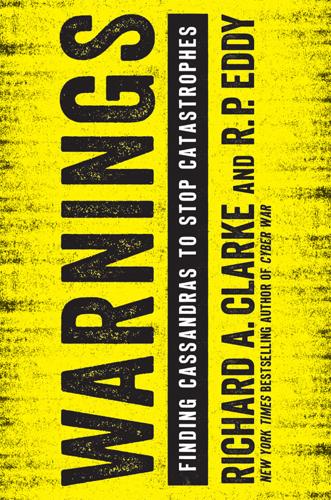
Warnings
by
Richard A. Clarke
Published 10 Apr 2017
David Morrison, in his book, had simply shown what would have happened if the 1908 event had taken place at the time of his writing. It might have triggered global thermonuclear war. If the asteroid had been a few minutes later in arriving at Earth, its impact could have been over Helsinki or Oslo. Even in 1908, that would have killed hundreds of thousands of people. The message of Morrison’s book was that the 1908 Tunguska event was not as anomalous as we would like to think, and a strike of equal or greater magnitude could happen again. Morrison, who was born just before World War II, is an astronomer with a Ph.D. from Harvard and decades of experience leading space-exploration projects at NASA. He is also generally regarded as the person who focused the world’s attention on the threat from asteroids and is a leader in the search for extraterrestrial intelligence (SETI).
…
(Enthoven), 361 Hsu, Steve, 343 Huckabee, Mike, 384n Human embryo gene editing, 326, 340–41, 345 Huntington, Samuel, 36 Hurricane Andrew, 53 Hurricane Betsy, 46 Hurricane Katrina, 6, 39–55, 72 government failures, 50–55 levee system, 40, 41–42, 46, 49, 50, 53–54 making landfall, 39–40, 49 New Orleans Scenario and, 45, 46–50, 52 Hurricane Pam exercise, 40, 47–49 Hurricane Sandy, 252 Hussein, Saddam Allen’s warning of Gulf War, 19–20, 22–23, 26–30, 358 Iraq-Iran War, 22–24 WMD and, 31 Hussein of Jordan, 28 IBM, 202, 209 Idaho Falls exercise, 288–89 Ideological Response Rejection, 179–80 Impact events, 301–24 Chelyabinsk meteor, 309–10, 316 Chicxulub crater, 307–9 Tunguska event, 301–3, 316 “In-attentional blindness,” 175 India, 261–73 Cold Start doctrine, 264–65, 267, 270 Mumbai terrorist attacks of 2008, 261–64 nuclear weapons and Pakistan, 264–73, 281–82 partition of, 265–66 Indian Air Force, 264 Indian Army, 266–67 Indian Navy, 264 Indications and warning (I&W), 25–27, 359–60 Industrial Revolution, 175 Initial Occurrence Syndrome, 171–72 Ford and Syria, 72 Fukushima nuclear disaster, 97–98 Iraq-Kuwait case, 34–35 Morrison and asteroid threat, 318 van Heerden and levee failures, 52 Yudkowsky and AI, 215 Institutional reluctance, 140–42, 177–78, 320–21 Intelligence (IQ), 343 “Intelligence explosion,” 201–2, 205 Intergovernmental Panel on Climate Change (IPCC), 246–50, 253, 254–55 International Arabian Horse Association, 54 International Herald-Tribune, 92 International Rice Research Institute, 193 International Summit on Human Gene Editing (2015), 345–46 Internet of Things (IoT), 292–300, 366 Invisible Obvious, 174–76, 234–35 In vitro fertilization (IVF), 343–44 Iran Iraq-Iran War, 22–24 nuclear program, 291–92 Syria and, 67, 73, 74 Iran-Contra scandal, 32 Iraq, 58, 63.
…
See also Financial crisis of 2008 weak AI and, 211–12 Storm, The (van Heerden), 51 Stuxnet, 291–92 Subprime mortgage crisis, 147–48, 153–54, 157, 162 Suh, Simona, 117–18 Sunni Muslims, 63 Sunshine Mine disaster of 1972, 128–29 Sun Yat-sen University, 340 SUNY Downstate Medical Center, 186 Super Aegis II, 214 Superintelligence, 201, 203–16 Supervisory control and data acquisition (SCADA), 292, 293 Surveillance, 359–60 “Swarm boats,” 214 Swine flu, 195–98, 218 Symposium Greek Restaurant (New York City), 237, 252–53 Syria, 57–74 Ford scenario, 65–66, 67–69 slippery slope of intervention, 70–74 Syrian Civil War, 60–61, 62–64, 72–73 Szostak, Jack, 327 Tactical nuclear weapons, 267–69 “Take It Easy” (song), 305 Tamiflu, 225, 233 Taubenberger, Jeffery, 222 Team Louisiana Report, 55 Technical expertise, 182–83 Technological evolution, 212–13 Technological singularity, 209 Tectonic plates, 80, 81 “Tells,” 25–27, 29–30, 36–37 Tenet, George, 8 Terminator, The (movie), 205 Tesla, 202 Tetlock, Philip, 13–15 Thierry de la Villehuchet, René, 102–3, 109, 113 “Tickling the dragon’s tail,” 83 Titan III rockets, 11–12 Tōhoku earthquake and tsunami of 2011, 81–82, 84–85 Tohoku Electric Power Co., 91 Tokyo Electric Power Company (TEPCO), 76–78, 86–98, 92–98 Toon, Owen, 273, 278–79 Trenberth, Kevin, 253 Troy, 1–2 Truman, Harry, 127 TTAPS, 273–77 Tunguska event, 301–3, 316 Tunisia, 57, 58 Turco, Richard P., 273, 276–77 Turkey, 62–63 Tyrosinemia, 332, 334 UBS, 149 Ukraine power grid cyber attack of 2015, 283–85, 287–88, 289, 291 Umea University, 329 Unemployment, 212–13 United Arab Emirates (UAE), 28 United Nations Climate Change Conference (2015), 247–50 United Nations Scientific Committee on the Effects of Atomic Radiation (UNSCEAR), 88 Universal hackability, 296–300 University of California, Berkeley, 13–14, 226, 327, 329 University of California, San Diego, 297 University of Colorado, 254, 328 University of Hawaii, 256, 315, 326 University of Iowa, 238, 243 University of Massachusetts, 296 University of Texas Southwestern Medical Center, 332 University of Tokyo School of Engineering, 92 Upper Big Branch Mine disaster, 121–22, 130–37 accident report, 133 Cassandra system, 137–38, 140–41 ventilation system, 133–37 Van Allen, James, 238 Van Heerden, Ivor, 41–55 background of, 41, 42–43 coastal restoration program, 43–44, 53 government failures and, 50–55 New Orleans Scenario, 45, 46–50, 52 resignation of, 44 Veracode, 295 Vinge, Vernor, 202 Vulnerabilities, and complexity, 366–67 Wall Street Journal, 115, 119, 154, 158, 163 Ward, Grant, 106 Warfare and AI, 199, 200, 213–14 Warning, the, 168, 170, 170–76 Warsaw Pact, 278 Washington Post, 243, 340 Waterman Award, 328–29 Watson (computer), 202, 209 Watson, James, 328 Watt, James, 174–75 Weak AI, 201, 210–13 Weapons of mass destruction (WMDs), 30–31, 358 Webster, Robert G., 223–25, 231–32, 235–36 Weidner, David, 158, 163 Weiss, Joe, 283–84, 286–89, 291–96, 298–300 West Antarctic Ice Sheet, 239, 246, 360 West Berlin, 25 Wharton School, 157–58 White, Ryan, 227, 384n White House National Warning Office, 355–56 Principals Committee, 29 Situation Room, 26–27, 181 Whitney, Meredith, 143–46, 148–54, 160–65 background of, 151, 153–54 Citigroup downgrade, 143–46, 154, 156–60, 164–65 Wide-field Infrared Survey Explorer (WISE), 315–16 Wiesel, Elie, 113 Wilson, E.
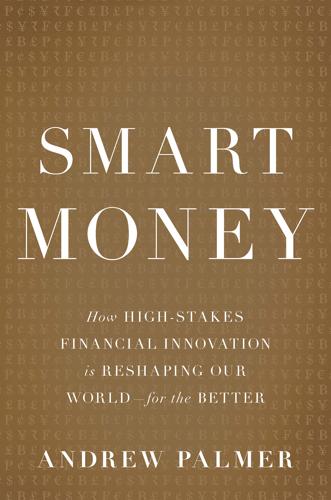
Smart Money: How High-Stakes Financial Innovation Is Reshaping Our WorldÑFor the Better
by
Andrew Palmer
Published 13 Apr 2015
We first met a few days after a meteorite had entered the earth’s atmosphere over Russia and exploded in the air above the region of Chelyabinsk, injuring as many as fifteen hundred people. The Chelyabinsk object was the largest to have entered our atmosphere since a 1908 meteorite known as the Tunguska event, which also struck Russia and flattened an estimated 80 million trees. The chances of a meteorite striking Germany was another thing Woo considered in designing the World Cup risk model, but this was one he ended up dismissing. Some probabilities (like that of England winning the tournament) are just too low to assess properly.1 Woo works at a firm called Risk Management Solutions (RMS), one of three large companies (the others are AIR Worldwide and Eqecat) that specialize in modeling catastrophes.
…
Melissa Schettini Kearney et al., “Making Savers Winners: An Overview of Prize-Linked Savings Products” (NBER Working Paper 16433, October 2010); Melissa Schettini Kearney, “State Lotteries and Consumer Behaviour” (NBER Working Paper 9330, November 2002). 11. Robert Shiller, The New Financial Order (Princeton, NJ: Princeton University Press, 2003). 12. Anne Murphy, “Lotteries in the 1690s: Investment or Gamble?,” Financial History Review (October 2005). NOTES TO CHAPTER 9 1. Giuseppe Longo, “The Tunguska Event,” in Comet/Asteroid Impacts and Human Society: An Interdisciplinary Approach, edited by Peter Bobrowsky and Hans Rickman (Berlin: Springer, 2007). 2. To be precise, a special-purpose vehicle set up by the sponsoring insurer is the issuer of the bond. That protects investors from having their money locked up in a bankruptcy process if the issuer goes bust. 3.
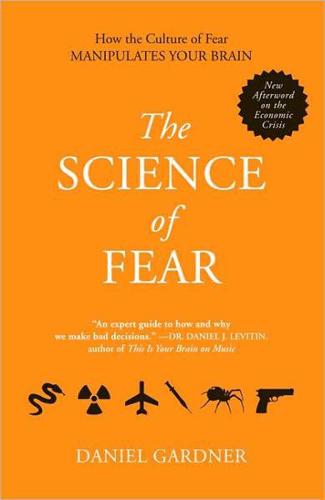
The Science of Fear: How the Culture of Fear Manipulates Your Brain
by
Daniel Gardner
Published 23 Jun 2009
The only really massive asteroid impact in the modern era was the Tunguska event, which happened a century ago in a place so remote only a handful of people saw it. There have been media reports of “near misses” and a considerable amount of attention paid to astronomers’ warnings, but while these may raise conscious awareness of the issue, they’re very different from the kind of concrete experience our primal brains are wired to respond to. Many people also know of the theory that an asteroid wiped out the dinosaurs, but that’s no more real and vivid in our memories than the Tunguska event, and so the Example Rule would steer Gut to conclude that the risk is tinier than it actually is.
…
restless legs syndrome Reynolds, Kim Rich, Frank Richardson, Louise ricin Roberts, Cokie Roberts, Julian Roche, John Roosevelt, Eleanor Roosevelt, Franklin Delano Rosenthal, Jeffrey Rothman, Alexander Rothman, Stanley Rottenstreich, Yuval Rozin, Paul Rule of Typical Things Ryle, Gilbert Sachs, Jeffrey Sagan, Carl sanitation sarin gas Sarkozy, Nicolas Schacter, Daniel Scheuer, Michael Schneider, Stephen school shootings Schwartz, Lisa Schwartz, Tony Schwartzman, Donna Schwarz, Norbert security industry Shames, Daniel shark attacks Sharpe, Richard Sherman, Steven sickle-cell anemia Siegrist, Michael Silent Spring (Carson) Simon, Herbert Sinaceur, Marwan Slovic, Paul and breast implant risks and the Good-Bad Rule and health risk research and impact of culture and media influence and numeracy risk perception research and the Tenerife conference and the tobacco lawsuit Small, Deborah smallpox Smart, Elizabeth Smith, Anna Nicole smoking Sokolove, Michael Stahl, Leslie Stalin, Joseph statistics and the breast implant scare contrasted with stories and crime risks and health risks methodological issues probability blindness Strack, Fritz Stuber, Bob Sunstein, Cass Sutcliffe, Simon Suzuki, David Taliban Tenerife Tenet, George Teresa of Calcutta (Mother Teresa) terrorism and the Bush administration and catastrophist writing and cost-benefit analysis and global communications and the Good-Bad Rule low-probability/high-consequence event and marketing fear and media coverage political reaction to psychological impact and risk perception and weapons of mass destruction Tetlock, Philip Thoreau, Henry David Trunzo, Caesar tsunamis Tunguska event Tversky, Amos typhoid fever typhus U.S. Food and Drug Administration (FDA) vaccines Vallone, Robert Vandello, Joseph Vietnam War volcanoes VX nerve agent Wald, George Walsh, John Wansink, Brian Wason, Peter water purification Waxman, Henry weapons of mass destruction (WMDs) Weingart, John Wells, Holly Westen, Drew West Nile virus Whelan, Paul Whylie, Barbara Wildavsky, Aaron Will, George Willer, Robb Wilms, Ian Wilson, Robyn Winfrey, Oprah Winkielman, Piotr Wolf, Naomi Woloshin, Steven World Health Organization (WHO) Worldwatch Institute World Wildlife Fund York, Herbert Zajonc, Robert Zaltman, Gerald Zillman, Dolf Zimmerman, Peter About the Author Daniel Gardner is a columnist and senior writer with the Ottawa Citizen.
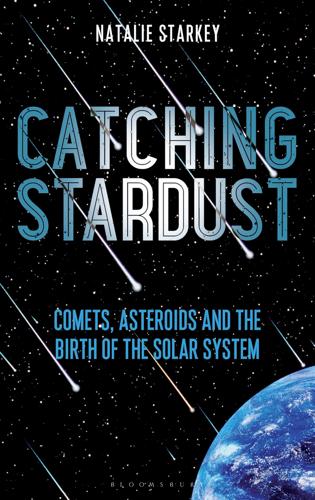
Catching Stardust: Comets, Asteroids and the Birth of the Solar System
by
Natalie Starkey
Published 8 Mar 2018
However, it’s not a comforting thought that we may leave behind for our descendants a planet that’s ill-prepared to deal with a potentially cataclysmic, species-killing impact from space, particularly if we can work together now to do something to prevent it happening. Hence, Asteroid Day – the date of which marks the anniversary of the Siberian Tunguska event – is designed to get us thinking carefully about what our global plans will be if we discover that an object is heading straight for us. An impact from space could have globally devastating effects, so working out how to deal with it involves enormous international cooperation. We just need to look at the huge scar that comet Shoemaker-Levy 9 left in the side of Jupiter, when it careered through its atmosphere in 1994, to wonder what the same impact could have done to Earth, which has a volume 1,300 times smaller than Jupiter.
…
However, if a large incoming comet was destroyed in the atmosphere, then it could be expected to cause an extremely large explosion, so powerful that it could have the same effects on the Earth’s surface as would a massive earthquake. If we think back to Chapter 3, where we introduced the powerful Siberian Tunguska event, this was an air blast caused by an incoming meteor that was powerful enough to flatten dense forests across a 2,000km2 (770sq miles) swathe, yet no fragments of space rock were found on the ground. Although there are various estimates, the object that caused this was thought to have been only 50–200m (160–650ft) in diameter, teeny on Solar System scales, and may have been a comet, or something of similar structure.
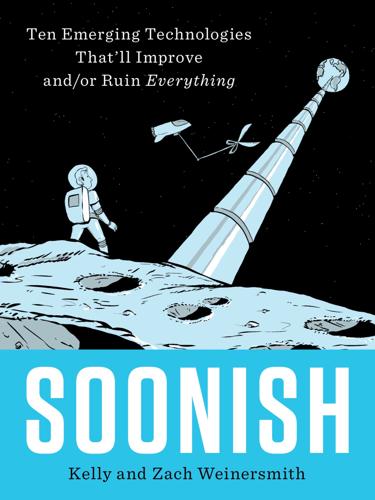
Soonish: Ten Emerging Technologies That'll Improve And/or Ruin Everything
by
Kelly Weinersmith
and
Zach Weinersmith
Published 16 Oct 2017
It’s possible a big strike would kick up enough dust to blot out the sun, cool the Earth, and destroy a year of crops. But the fact that “Hey, Kim Jong-un isn’t that nuts” is pretty cold comfort. The largest encounter between Earth and an extraterrestrial object in recorded history was the 1908 “Tunguska event,” when a huge object (we don’t know if it was a comet made mostly of ice, or an asteroid made mostly of rock) exploded over rural Russia. This object was probably about 120 feet in diameter, and its explosive yield would’ve been comparable to 185 times the bomb that was dropped on Hiroshima. The Tunguska meteorite is small compared to some of the asteroids we would be able to bring home.
…
Craig Venter Institute, 214–15 Jell-O, 298 Jell-O shots, 161 jet fuel, 209–10, 218 Jin, Yaochu, 122 joinery, 143–44 Joint BioEnergy Institute, 210 Joint European Torus (JET), 89 Josephson, Brian, 5–6 Josephson junction, 6 Jurassic Park (film), 222 Kazakhstan, 100 Keasling, Jay, 199 Keating, Steven, 146–48, 153, 155, 253 Kennedy, Philip, 315–17 Kevlar, 35 Khoshnevis, Behrokh, 145, 146, 147, 158 kidneys (organ), 280 Kilobot project, 115, 119 Kohler, Matthias, 152 Kurman, Melba, 159 Lake Chagan, 100 lasers, 2, 27–29, 84, 86–87 Law of the Sea, 33 leukemia, 238, 239, 242 Leuthardt, Eric, 303, 314–15 Levin, Gilbert, 334 levitation, 326–27 LiDAR, 174 life insurance, 250 LIFT (laser-induced forward transfer), 265–66 Limited Test Ban Treaty (LTBT), 99 Lipschultz, Bruce, 91–92, 93 Lipson, Hod, 159 Lipton, Jeffrey, 162 liquid hydrogen, 39 liquid oxygen, 20, 39 lithium, 77 LIT ROOM, 110–11 livers (organs), 257–59, 260–61, 280 lizards, 187 locked-in syndrome, 316 Lockheed Martin, 90 lossless power transmission, 325 Low Earth Orbit (LEO), 14, 15–16, 21, 34, 38 Lowther, William, 50 lung cancer, 238–40 lungs (organ), 261 Lyme disease, 255 lymphoma, 242 McAlpine, Michael, 271 McCracken, Garry, 77 Magee, John Gillespie, Jr., 13 “magic book,” 176 MagLIF (Magnetized Liner Inertial Fusion) project, 87–88 “magnetic confinement”-type reactors, 85 magnetic levitation (MagLev) trains, 24–25, 30, 327 magnetosphere, 59 magnets, 5 MakerBot, 162 malaria, 198–203, 207 mammoth genome, 222–24 Mankins, John, 320 marble, 144 marching bands, 119–20 Mars, 19, 40, 45n, 52, 55, 158–59 Mars One project, 45n Masiello, Carrie, 210–11 Massachusetts General Hospital, 242 Massachusetts Institute of Technology (MIT), 102, 103, 104, 106, 107n, 108, 214, 216 Mediated Matter lab at, 146 Plasma Science and Fusion Center at, 91 matching markets, 275–81 Matthews, Kirstin, 250 Maus, Marcela, 242–43 Max Planck Institute for Infection Biology, 212 µBiome, 2 M-blocks, 118 MD Anderson Cancer Center, 232, 234 Mediated Matter lab, 146 medical tourism, 272 medical trials, 254–55, 268–69 medicine, 221 augmented reality in, 179, 185–86 bioprinting and, see bioprinting origami robots in, 106–7 programmable matter in, 127–28 synthetic biology in, 198–207 see also precision medicine Meetup.com, 175, 179 MEG (magnetoencephalography), 289–90, 291 Meissner effect, 326 meltdown, 91–92 memory, 220, 304, 307–8, 311 Mendelsohn, John, 232, 234 Meng, Yan, 122 Menges, Achim, 104 Menon, Sandeep, 235 messenger RNA, 193 metabolome, 244–46 meteorites, 53, 67 Michigan Array, 296, 298 microRNA, 239–40, 246–47 Microsoft, 272 Miller, Jordan, 261, 269, 270–71, 274 miniaturization, 176 “Minibuilders,” 151–52 miRBase, 240 mirror humans, 332–35 MIT Technology Review, 6n molds, configurable, 134 molecular scissors, 212, 213–14 molecules, mirror, 334 monogenic traits, 196–97 mononucleosis, 230 moon, 55 moon landing, 19 moral hazard, 273–74 Moravec’s Paradox, 139 mosquitoes, 200, 203, 218 Mossad, 50 motion sickness, 168 movies, 183 MRI (magnetic resonance imaging), 290–91 M-type (metal) asteroids, 53, 54 mucociliary escalator, 187–88 mucus, 236 Mukhopadhyay, Aindrila, 210 multiverse, 329 Munger, Steven, 334–35 Musk, Elon, 19 mutation breeding, 191–92 mutations, 219, 236–37 Mycoplasma genitalium, 214–15 Mycoplasma laboratorium, 215 Mycoplasma mycoides, 215n Nagasaki bombing, 98 nano-bio-machines, 3 nanobots, 118 nanotechnology, 221 NASA Innovative Advanced Concepts (NIAC), 25, 31, 35 nasal cycle, 186–89 nasal venous sinusoids, 188 NASA (National Aeronautics and Space Administration), 20, 47, 60, 65, 92, 158, 159–60 National Academy of Sciences, 203 National Cancer Institute, 238 National Defence Department, Canada, 47 National Ignition Facility (NIF), 86–87 National Institutes of Health, 214, 234, 235 Native Americans, 196n natural gas, 73, 98–99 Nebraska, University of, 176 Neufert, Ernst, 135 neural dust, 299 neural implants, 310 Neurobridge, 312 neuro-cyber-connection, 312–13 neurons, 286–87, 290, 298, 306 EEGs and, 287–90 NeuroPace, 302 neuroprosthetics, 311, 315, 322, 324 neurotrophic electrodes, 297–98, 315, 316 Neutron Club, 80 neutron gun, 80–81 neutrons, 73, 91 New Jersey, 299 New Mexico, 96 nickel, 54 Nocera, Dan, 208 North Carolina State University, 63 Norway, 22n nostrils, 186–89 Nuclear Explosions for the National Economy, 100 nuclear reactors, 58 Nucleon (concept car design), 97 nucleus, 192, 193 nutrition, 245–46 Olestra, 334 Oliver, John, 326n Open Humans Foundation, 252n “optical mining,” 63 orbiting factory, 24 organ donation, 257n organ markets, 274, 275–81 Organovo, 268 organ rejections, 275 organ sales, 258, 280–81 organ transplant list, 257–58, 272 organ transplants, 206–7 origami robots, 105–8, 129 OSIRIS-REx, 65 “Our Friend the Atom” (Disney cartoon), 97 Outer Space Treaty (1967), 63–64 oxidizer, 20 Oxman, Neri, 146, 148 oxygen, 208–9 oxygen deprivation, 205 oxygen gas, 82 Pacific Ocean, 35–36 Paddon, Chris, 199 Palo Alto Research Center, 116 Panama Canal, 97 pancreas, 236 parallel universe, 329 paralysis, 312 Parkinson’s disease, 301 patenting, 124 patent law, 272 peacekeepers, 181 Pennsylvania, University of, 108 Personal Genome Project, 252–53 personal security, 124–25 PERVs, 207 pesticides, 200 Petersen, Kirstin, 149, 150–51 Pfizer, 235 phobias, 179 Phobos (moon of Mars), 55 phosphenes, 306 photosynthesis, 208 Picon, Antoine, 138 pigs, 206 Piraha (Amazonian tribe), 140n Pitt, Brad, 167 Plait, Phil, 36, 38 plants, 125 Chinese sweet wormwood, 198–99 plasma, 85, 88 Plasma Science and Fusion Center, 91 platinum, 52, 55 pluripotent stem cells, 273 plutonium, 58 pogo sticks, 27 Pokémon GO, 8n, 166, 182–83 pollution, 94 porcine endogenous retroviruses (PERVs), 207 positive transcriptional autoregulation, 205n potassium iodide pills, 60 poverty, 157 precision medicine, 229–56 benefits of, 254–56 cancer diagnosis, treatment, and monitoring in, 238–44 concerns about, 248–53 data collection in, 234–35 genetic disorders and, 235–37 metabolome and, 244–46 privacy issues in, 248, 250–53 Precision Medicine Initiative Cohort Program, 234 predictive ability, 1–2 Princeton University, 142, 271 privacy issues, 130, 182, 248 of AR, 180–81 in brain-computer interfaces, 309–10 in precision medicine, 248, 250–53 programmable matter, 101–32 benefits of, 125–29 computers as, 101 concerns about, 122–25 in everyday life, 105 hacking of, 122–23 military applications of, 123–24 origami robots as, 105–8 power for, 118 reconfigurable houses and, 109–11 see also robots programmed materials, 103–5 Project Babylon, 48–49 Project Esper, 185 Project HARP (High Altitude Research Project), 47, 48 Project Plowshare, 96–100 Project Rulison, 98 Promobot, 129 Promobot IR77, 129 propellants, 14–15, 18, 20, 23 prostate cancers, 239n, 247 prosthetics, advanced, 322–24 proteins, 193, 194, 195, 221, 234, 239, 332 protium, 73 protons, 73, 77 Pryor, Richard, 328n QR code, 169–71 quantum computing, 328–30 quantum mechanics, 329, 330 Quinn, Roger, 151n radiation, 59–60, 62, 99 radiation therapy, 241 radioactive waste, 91 railgun, electromagnetic, 24–25 ramjet, 21, 22, 26 Reaction Engines, 22 Recognizer, 180 Reconfigurable House exhibit, 111 recycled fecal matter, 160 recycling, 128 Reece, Andrew, 247 refining, 56 refrigeration, 4 “Registry of Standard Biology Parts,” 216 Reichert, Steffen, 104 Reiss, Louise and Eric, 99 RepRap, 269–70 “repugnance,” in markets, 276 reuse, 128 ribosome, 193–94, 195 Rice University, 200n, 210, 250, 261 rigid airship, 29–30 Ringeisen, Bradley, 259 RNA, 193–94, 195, 332 RNS System, 302 Robinette, Paul, 130 Robot Baby Project, 120n robotic construction, 134–63 benefits of, 156–59 concerns about, 153–56 and space travel, 158–59 swarm robots in, 149–53 3D printing for, 144–49 robots, 102, 129–32 autonomous, 113–16 as construction workers, 139–44 coordinating movement of many, 119–22 evolving of, 120–22 generalization in, 142 industrial, 136 in medicine, 127–28 modular, 112–16 neuroprosthetics and, 311 origami, 105–8, 129 termite-inspired, 150–51 see also programmable matter rocket launches, 3 rockets, 23, 39 air-breathing, 19–24 aircraft-launched, 29–30 cost of, 14 laser ignition for, 27–29 propellant for, 14–15, 18, 20, 23 reusable, 14, 15, 18–19, 39 simplicity of, 22 stages of, 18n rocket sled, 25, 26 rockoon, 29 rod from God, 38 roller coaster, 23, 42 Romanishin, John, 118 Roombots, 112–13, 121, 127 Roth, Alvin, 276, 277, 279, 280 “Ruby Red” grapefruit, 192 Rus, Daniela, 106–7, 108, 118, 128 Russia, 67, 99, 217n SABRE (Synergetic Air-Breathing Rocket Engine), 22 Saddest Generation, 166 Safe Is Not an Option: Overcoming the Futile Obsession with Getting Everyone Back Alive That Is Killing Our Expansion into Space (Simberg), 44 Sahara Desert, 321 SAM (robot), 141, 142, 153–54 Sandia Labs, 85, 87 San Francisco, Calif., 154 sanitation, 157 satellites, 20, 34, 41, 47 Schalk, Gerwin, 313 Schall, Gerhard, 177 Schrödinger’s cat, 329 Schrödinger’s Killer App (Dowling), 330n Schwenk, Kurt, 187 See No Evil, Hear No Evil (film), 328n seizures, 300, 301, 302 Select Sires, Incorporated, 197n self-driving cars, 123 Sensorama, 168 Shapiro, Beth, 222, 223–24 Shotwell, Gwynne, 19 Shtetl-Optimized (blog), 330n Siberia, 224 sickle cell amenia, 237 Silberg, Joff, 210–11, 218–19 silicon, 52, 54 Silver, Pamela, 204, 205–6, 208–10, 219 Simberg, Rand, 44 Skylon, 22 Skype, 314 Skywalker, Luke (char.), 324 Slingatron, 25–26 slums, 157 smallpox, 216, 217 Smart Helmet, 179 “smart homes,” 111 smartphones, 169 smell, sense of, 174–75, 186–89, 334 Smith, Noah, 153n, 154 snakes, 187 social media, 248, 250 privacy issues of, 180–81 software, 102, 104–5, 124 hacking of, 122 solar flares, 60 solar panels, 58 cost of, 320 solar photovoltaic cells, 92, 208 solar power, space-based, 319–21 solar wind, 37 Solid Freeform Fabrication Symposium, 162 solid rocket boosters, 39 solid tumors, 238, 240–41 Solomon, Scott, 200n sound, speed of, 21 South Africa, 48 Southern California, University of, 145, 308 Soviet Union, 38, 58, 99, 100, 135 space cannon, 23–26 space debris, 39–40 space elevators, 31–38, 39, 41, 42–43, 314, 320 spaceflight, 13–50 air-breathing rockets and spaceplanes for, 19–24 benefits of, 41–45 concerns about, 38–40 cost of, 41, 44–45 present cost of, 13–14 reusable rockets for, 18–19 space elevators and tethers for, 31–38 starting at high altitude, 29–30 spaceplanes, 19–24, 39 space settlements, 40 Space Shuttle, U.S., 18, 39 space tethers, 31–38 space tourism, 42 space travel: fusion energy in, 94 supergun for, 23–26 SpaceX, 8n, 18–19, 30 spatial resolution, 288, 289, 292–93 spearmint, 334 spinal damage, 312 Sputnik, 39 SR-71 spy plane, 21 Starbucks, 180 Star Trek franchise, 34, 86 Star Wars franchise, 78n, 82, 263 steam turbine, 76 stem cells, 263, 272–73 Stevens Institute of Technology, 92, 122 STL-file, 267 storytelling, 178 stratospheric spaceport, 29–30 straw, reconfigurable, 103–4 stress, 246 stroke, 247 strong nuclear force, 77 strontium-90 (Sr-90), 99 Stuttgart, University of, 104, 143 S-type (stony) asteroids, 53, 54 sugar molecules, 210 sugar sintering, 270–71 sun, 59, 78 Sung, Cynthia, 108, 119, 127 superconducting levitation, 326–27 superconducting quantum interference device (SQUID), 4, 6, 290 superconductors, 4–6 room-temperature, 325–28 supergun, 46–50 supersonic ramjet (“scramjet”), 21–22, 26, 126 Sure Shot Cattle Company, 197n surgery, 185–86 Surrey, University of, 122 swarm bots, 119–20, 121–22 SWARMORPH project, 113–15 swarm robots, 149–53 switchgrass, 209–10 Switzerland, 22n SYMBRION, 115 Syn 3.0, 215 synthetic biology, 190–225 benefits of, 220–21 concerns about, 216–19 environmental monitoring by, 210–12 fuel production by, 208–10 generalizing of, 212–14 grassroots approach to, 216 “Synthetic Biology for Recycling Human Waste into Food, Nutraceuticals, and Materials: Closing the Loop for Long-Term Space Travel” project, 160 synthetic materials, 101–2 syphilis, 230n Syria, 156 Systems & Materials Research Consultancy, 159 T cells, 242–43 technology, 3–4 asteroid-moving, 67 contingent nature of development of, 3–7 discontinuous leaps in, 2 Telegraph, 183 Teller, Edward, 98 temporal resolution, 288, 292–93 Terminator (film), 103 termites, 120, 149, 150–51 terrorism, 36, 38, 217 Tethers Unlimited, 63 tetracycline, 200 theft, 130 3D printers, 144–49, 151–52, 259 prosthetics and, 322 3D printing, 125, 152 of food, 159–63 of organs, see bioprinting software for, 267 3554 Amun, 53 Throw Trucks with Your Mind (game), 312 thyroid, 60 Tibbits, Skylar, 103–5, 118, 123, 126 titanium, 35 “tokamak” configuration, 88, 92 tornados, 25 touch, sense of, 175 Tourette’s syndrome, 301 transcranial magnetic stimulation, 302, 304 transfer RNA, 193–94, 195 Transformers series, 102 The Tree of Life (Web site), 234n tritium, 74, 77n, 91 tumor cells, 205 tumors, 290 “Tunable Protein Piston That Breaks Membranes to Release Encapsulated Cargo, A” (Silver, et al.), 206 “Tunguska event” (1908), 67 turbofan engine, 20–21, 22 Turner, Ron, 35, 36, 37 23andMe, 251, 252 Twitter, 20n, 187, 250 Two and a Half Men (TV show), 310 Type II superconductors, 326 Umbrellium (Haque Design + Research), 111 Underground Railroad, 178 UN-Habitat, 157 Unilateral Forced Nostril Breathing (UFNB), 189 United Nations, 96 United States, 39, 135–36 Universal Semen Sales, Inc., 197n uranium, 58 U.S.
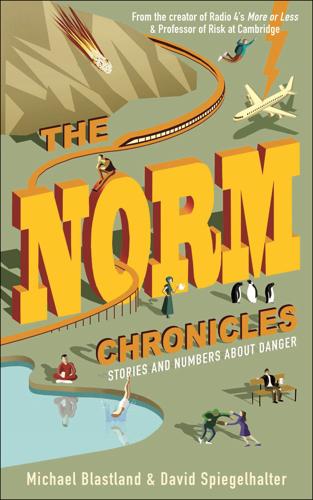
The Norm Chronicles
by
Michael Blastland
Published 14 Oct 2013
Comette Family Home Damaged by Egg-Sized Meteorite. 2011. Available from: http://www.guardian.co.uk/world/2011/oct/10/comette-family-home-damaged-meteorite. 4. Woo G. Calculating Catastrophe (London, Imperial College Press, 2011). 5. Risk Management Solutions. Comet and Asteroid Risk: An Analysis of the 1908 Tunguska Event. 2009. Available from: www.rms.com/publications/1908_tunguska_event.pdf. 6. National Research Council. Defending Planet Earth:Near-Earth Object Surveys and Hazard Mitigation Strategies (Washington, D.C.: The National Academies Press, 2010). 7. Boslough, M.B.E., Crawford, D.A. Low-Altitude Airbursts and the Impact Threat. International Journal of Impact Engineering. 2008 Dec;35(12):1441–8. 8.
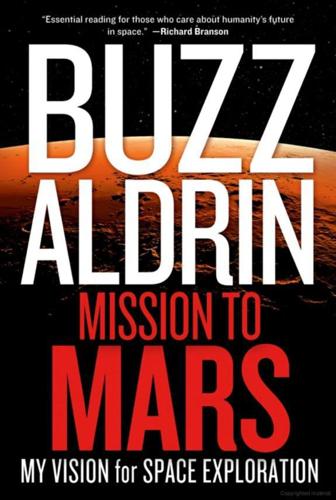
Mission to Mars: My Vision for Space Exploration
by
Buzz Aldrin
and
Leonard David
Published 1 Apr 2013
Itokawa, a large asteroid surveyed by Japan’s Hayabusa probe, contrasted with the International Space Station (Illustration Credit 5.3) For the moment, put aside that mental image of movie star Bruce Willis and his team wrestling with a massive space rock in the hit film Armageddon. It turns out that smaller “airbursters” are the more disconcerting sky-slamming flotsam from space. They can cause localized destruction and may infringe upon our air space with surprisingly little warning time. For example, the 1908 Tunguska event is a saga in which a rocky impactor detonated over remote Siberian real estate, knocking down about 500,000 acres of forest. Supercomputer simulation work led by Sandia National Laboratories principal investigator Mark Boslough suggests that the incoming object was roughly 130 feet in diameter.
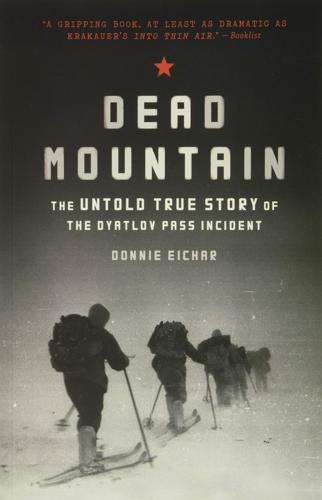
Dead Mountain: The Untold True Story of the Dyatlov Pass Incident
by
Donnie Eichar
Published 20 Oct 2014
NASA scientists estimated its diameter to have been 55 feet, making it the largest meteor to hit Earth’s atmosphere in over a century since the Tunguska meteor event of 1908. That meteor—thought to have been approximately 130 feet across—had resulted in an explosion that flattened 800 square miles of forest in central Siberia, with a blast several hundred times more powerful than the atomic bomb dropped on Hiroshima. Unlike the remote Tunguska event, the meteor on February 15 struck the atmosphere above Chelyabinsk, a city of more than one million people. The meteor broke apart between 12 and 15 miles above Earth, in a bright white explosion accompanied by an intense aftershock. The pressure of the explosion blew out windows across Chelyabinsk—a million square feet of glass by one estimate—and injured more than 1,200 people.
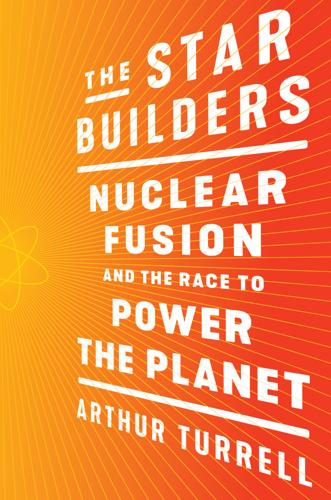
The Star Builders: Nuclear Fusion and the Race to Power the Planet
by
Arthur Turrell
Published 2 Aug 2021
Chaloner, “Extinctions in the Fossil Record [and Discussion],” Philosophical Transactions of the Royal Society of London B: Biological Sciences 344 (1994): 11–17; C. Lavett Smith, C. S. Rand, B. Schaeffer, and J. W. Atz, “Latimeria, the Living Coelacanth, Is Ovoviviparous,” Science 190 (1975): 1105–1106. 3. C. R. Chapman and D. Morrison, “Impacts on the Earth by Asteroids and Comets: Assessing the Hazard,” Nature 367 (1994): 33–40; Z. Sekanina, “The Tunguska Event—No Cometary Signature in Evidence,” Astronomical Journal 88 (1983): 1382–413; S. Self, “The Effects and Consequences of Very Large Explosive Volcanic Eruptions,” Philosophical Transactions of the Royal Society A: Mathematical, Physical and Engineering Sciences 364 (2006): 2073–97. 4. P. W. Anderson, “More Is Different,” Science 177 (1972): 393–96. 5.
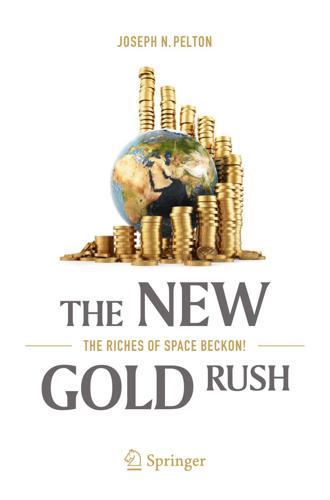
The New Gold Rush: The Riches of Space Beckon!
by
Joseph N. Pelton
Published 5 Nov 2016
Now one might think that this new guidance was based on the fact that someone had done some very careful studies and concluded an asteroid less than 140 m would not be too dangerous and cause minimal harm. The truth is quite the opposite. To get an idea of what size of asteroid represents a major city-killing event one only has to look at the evidence from the Tunguska event of June 30, 1904. This space object, either an asteroid or a comet, traveling at 54,000 km/h (33,500 mph) exploded some 8 km (5 miles) above the Siberian forest with the explosive force more than 1000 times that of the Hiroshima atomic bomb and flattened and incinerated a forest in a radial design some 2000 km2 wide and containing 80 million trees.
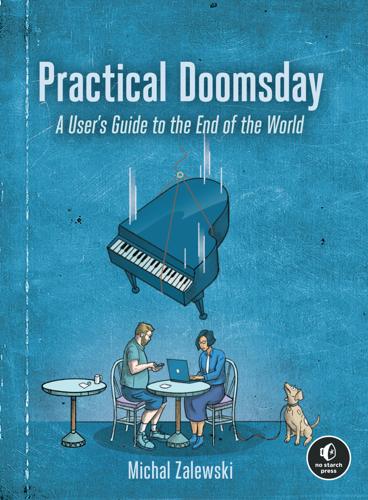
Practical Doomsday: A User's Guide to the End of the World
by
Michal Zalewski
Published 11 Jan 2022
In 1985, a volcano erupted near Armero, Colombia, killing more than 20,000 residents.15 A few years earlier, the eruption of Mount St. Helens blanketed several states with ash and necessitated extensive cleanup efforts in the populated parts of Eastern Washington. In 1908, a massive explosion known as the Tunguska event, widely believed to be the result of a large meteorite blowing up in the atmosphere, flattened a remote portion of the Siberian taiga in a radius of about 20 miles. But such events, however frightening, don’t spell the end of days. In terms of their impacts and potential countermeasures, they fit squarely with earthquakes, hurricanes, and other run-of-the-mill natural disasters discussed in Chapter 3.

Global Catastrophic Risks
by
Nick Bostrom
and
Milan M. Cirkovic
Published 2 Jul 2008
, Asher, D.J. 1998: On the possible relation between the Tunguska bolide & comet encke, in: planetary & space science, 46, pp 205-2 1 1 . Stokes, G . H . et. a!. (2003). Report o f the Near-Earth Object Science Definition Team. NASA, http: f fneo. jpl.nasa.govfneo fneoreport030825 . pdf Stuart, J .S. and Binzel, R.P. (2004). NEO impact risk overrated? Tunguska events once every 2000-3000 years ? Icarus, 1 70, 295- 3 1 1 . Toon, O . B . et a!. (1990) . Environmental perturbations caused b y asteroid impacts. I n Gehrels, T . (ed.), Hazards Due t o Comets and Asteroids, p. 7 9 1 (Tucson: U niversity of Arizona). Whipple, F . L. (1967). The Zodiacal Light and the Interplanetary Medium.
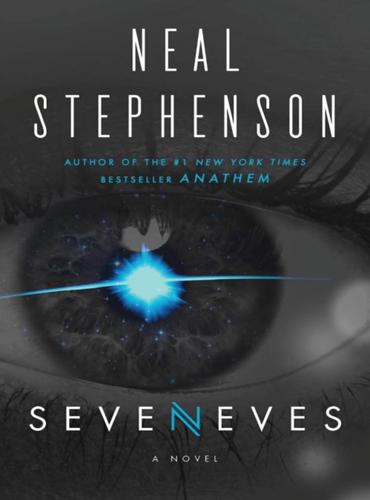
Seveneves
by
Neal Stephenson
Published 19 May 2015
They could form black holes that instead of weighing what a star weighs could be a lot smaller.” “How small?” “I don’t think there’s a lower limit. But the point is that one of them could zip through space invisibly and punch all the way through a planet and out the other side. There used to be a theory that the Tunguska event was caused by one, but it’s been disproved.” Dinah knew about that, because her dad liked to talk about it: a huge explosion in Siberia, a hundred years ago, that had knocked down millions of trees out in the middle of nowhere. “That was a big deal,” Dinah said, “but not enough to blow up the moon.”